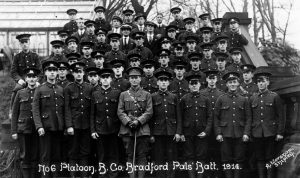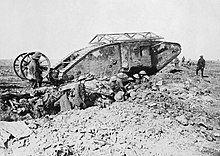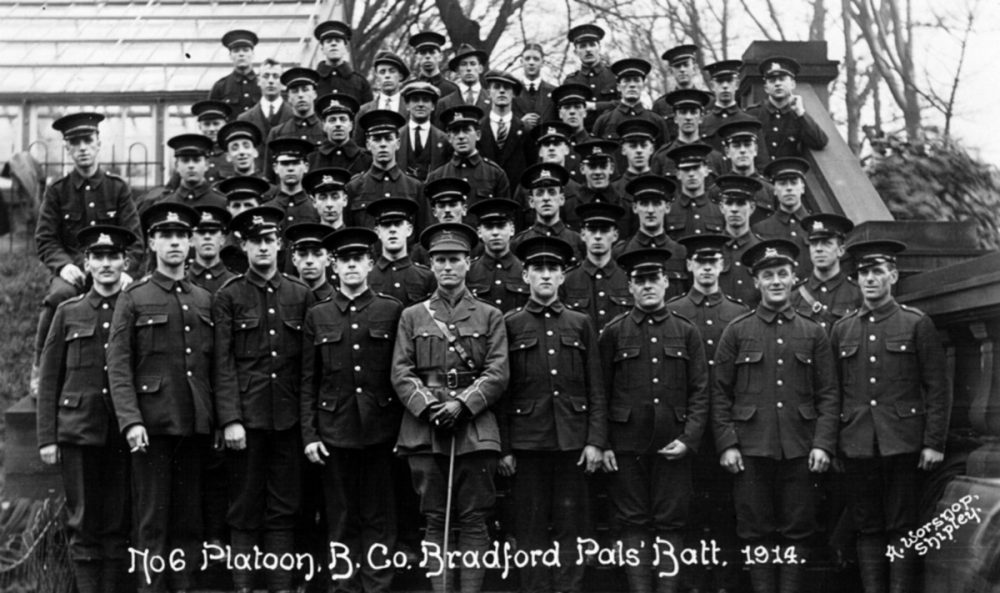The Battle of the Somme began on July 1st 1916. Lasting 141 days it was one of the longest continuous battles of the First World War. British forces along with those from France and the British Empire intended to relieve pressure on French troops at Verdun. Another objective was to inflict as much damage as possible on the Germans. The Allies had also agreed to launch offensives on several fronts against the Central Powers. The first day of the Battle of the Somme is remembered due to the heavy casualties suffered by the British Army, 57470 killed, wounded or captured. Given the objectives were to relieve pressure and inflict damage it is hard to assess who won the Battle of the Somme.

Context
By 1916 the Western Front had become quite static. The expected war of movement had developed into one based around trenches. The Allies had dug Trenches to prevent further advances, the Germans had dug in having already gained ground. War was becoming increasingly one of attrition. Both sides sought to break through the Trench networks and gain decisive victories. They introduced new weapons, with Gas having been used in 1915. The professional forces of all of the combatant nations were strained. Recruitment had become a concern, volunteer armies were now being trained and readied for front line action. This was a far cry from the expectations of either side at the outbreak of war in 1914. The Germans were convinced that the Schlieffen Plan would work, the British had faith in the British Expeditionary Force dispatched in later summer of 1914 and the French had imagined that their defences would hold firm and allow them to implement Plan XVII.
Allied plans for 1916
The Allies had a clear plan for their operations in 1916. British forces were increasing in size. Lord Kitchener’s recruitment drive and the subsequent training of these ‘Pal’s Battalions’ would see the Army in France increased to 1.4 million men (combined forces) by June. David Lloyd George, then Minister for Munitions, had made the optimistic promise that enough shells would be produced by April and production sustained to a level at which the Allies could go on the offensive. In February 1916 the British formed a new Fourth Army. This was to be commanded by Sir Henry Rawlinson, a veteran of the Battle of Ypres. This new army was assigned the Somme valley, an area in which little fighting had previously taken place.
The intention in 1916 was for each of the Allied powers to take up the offensive against the Central Powers. The idea being that the full might of these forces all attacking on different fronts would be overwhelming.

Verdun: German offensive changes Allied priorities
In February 1916 the Germans launched a major offensive at Verdun. This symbolically important location was to the east of Paris. It consisted of a series of well constructed defences. The German High Command identified it as a location that would drain French reserves, weaken the Allied ability to launch any offensive of their own, threaten Paris and potentially lead to a huge psychological victory given the national pride associated with Verdun. The attack changed Allied plans. They could no longer go on the offensive in the way that they had intended to. Verdun was draining French troops and was perilously close to being taken. The plan now had to alter to relieve pressure on the French.
Battle of the Somme: Objectives
The objectives for the Battle of the Somme were twofold. First, to relieve pressure on Verdun. This would be achieved by launching an offensive so big that it required the Germans to reallocate resources. Second, as the Germans were doing to the French, the Allies would now attempt to drain the Germans of resources. Drain their reserves, inflict as much damage as possible.
Planning for the Somme Offensive
The Somme Valley was well known to the Allies. German positions were well mapped, strength well known, reserves and supply routes all identified. This allowed the Allies to identify the weak spots in the German line and prepare accordingly. The Germans were well dug in. To overcome this the British used miners to create tunnels underneath Trench positions. Here, huge charges were placed which would be detonated minutes before the infantry attacked. A large artillery bombardment was prepared. This would annihilate the German positions, destroying everything in its path. It would be the largest artillery bombardment to date. The combination of the mines and artillery would render the German lines virtually useless. Infantry could then advance beyond German front lines.
There were some disagreements over the detail of the plans. The Fourth Army had suggested a front some 20000 yards wide. This was increased to 25000 by High Command. The initial objectives were also altered. The initial suggestion was to aim to take the front lines on Day One. this was changed to advancing beyond these. This decision was based partly on observations made at the Battle of Loos and also based on the way in which the Germans had initially achieved success at Verdun. The theory, which became an order, was that after the bombardment and infantry attack on the front lines the enemy would be so disorientated that reserves would be badly organised. By advancing beyond the front line this enabled those reinforcements to be dealt with from a more advanced position, whilst they were at their weakest.
The First Day of the Battle of the Somme
The first day of the Battle of the Somme has gone down in history as being the day on which the British army suffered the most casualties. Just under 60,000 men were killed, wounded or captured on July 1st 1916. The offensive had been preceded by the artillery bombardment. Mines had been detonated. The army was largely the volunteer force recruited by Kitchener. At the heart of the assault were men from these Pals battalions. The infantry advanced with officers assuring them that victory was assured. However, the planning and understanding of the German defences was flawed. The German positions were deeper and stronger than anticipated. German soldiers had not been obliterated, they had simply waited in underground bunkers for the bombardment to stop. Barbed wire hadn’t been destroyed, it had simply become more mangled and in large stretches of the front remained a huge problem.
As the infantry marched across no-mans-land, the German defenders took to the trenches. The silence of the guns made it clear that the ground assault would begin. Machine guns and snipers took up positions in the trenches. As the Pals battalions became exposed in no-mans-land, they opened fire. Some battalions suffered horrendous casualty rates.
The 1st and 2nd Bradford Pals lost 1770 men in the first hour, out of a total of 2000. Of the 900 men in the Leeds Pals, 750 were lost. 584 of 740 from the Accrington Pals were killed.
The hail of bullets faced by the 10th Battalion West Yorkshire Regiment was considered so ferocious at Serre that every man who managed to survive the day was awarded a gallantry medal. That figure was 125 men, the rest were dead. This battalion suffered the heaviest casualties of the first day.
The same story was repeated to varying degrees of loss up and down the front. The nature of the recruitment meant that where losses were high on the front, they led to large losses from localities back in the United Kingdom. Losses were particularly high among the northern mill towns, from Scottish Pals Battalions and for some of the battalions raised in and around London.
External link: Men of the Battle of the Somme, stories of the West Yorkshire Regiment
Who won the Battle of the Somme?
There were actually some successes on the first day of the battle. Some battalions were able to advance to their objectives and not all units suffered huge losses on that day. However the bulk of the force had been repulsed so a rethink was required. The strategy over the following 140 days was to continue bombarding the German lines, additional attempts mining and additional assaults by infantry going over the top. The battle saw, in September, the first use of tanks on a battlefield. Aircraft were used. Gas was deployed. Warfare stayed the same in many ways but new tactics were developed over the course of the battle.

At the end of the Battle of the Somme the German force had suffered 550,000 casualties. In that respect, they had suffered and been forced to redirect reserves away from Verdun to the Somme. However, this came at a cost to the Allies. Britain lost 360,000 men over the course of the battle. The French lost 200,000. There were also 64,000 from the British Empire.
The Allies made some territorial gains. These were not huge and one way of assessing it is to consider that for each mile gained, there were 125,000 casualties suffered.
Related: Douglas Haig and the Battle of the Somme
[products limit=”4″ columns=”4″ category=”first-world-war” cat_operator=”AND”]
Causes of the First World War – Timeline of Causes – Forgotten Causes – Assassination of Franz Ferdinand – The Schlieffen Plan – Historiography of the Causes of the First World War
Outbreak of War (Public reaction in Britain) – The British Expeditionary Force in 1914
Trench Warfare – Simulation: Would you make a good officer in the trenches? – British contribution to the Western Front
Battles of the First World War – First Battle of the Marne – The Gallipoli Campaign – Battle of Verdun – Battle of Jutland – Brusilov Offensive – Battle of the Somme – Battle of Passchendaele – The Spring Offensive – Battle of Amiens – Victory on the Western Front?
The Home Front – Revision exercise – Changing role of Women – Propaganda – Censorship – Conscientious Objectors – Rationing and Recruitment
Personalities – Douglas Haig and the Somme – Charles Gass – Billy Bishop – Ludendorff – The Bradford Pals – Black History and the First World War
Technology and New Weapons – British Tanks – Machine Guns
Medicine in the First World War
Other wars:
The Norman Conquest – The Wars of the Roses – The British and English Civil Wars – The Second World War – Vietnam War – Cold War
Famous Battles:
Battle of Hastings – Battle of Towton – Battle of Bosworth – D Day
Related Content:
The British Empire – The Treaty of Versailles – Impact of the War on Germany – Primary History – History Teachers Resources

